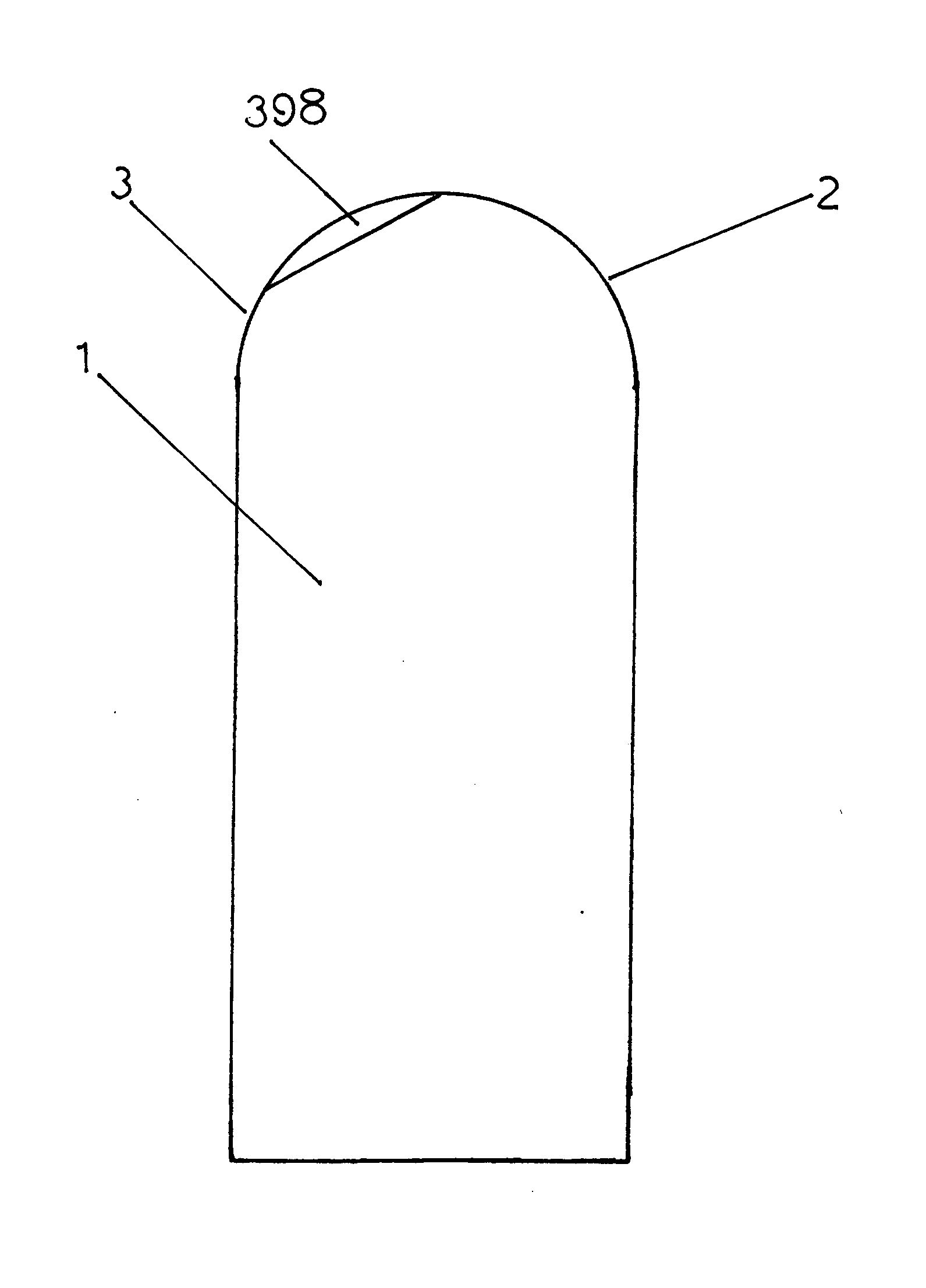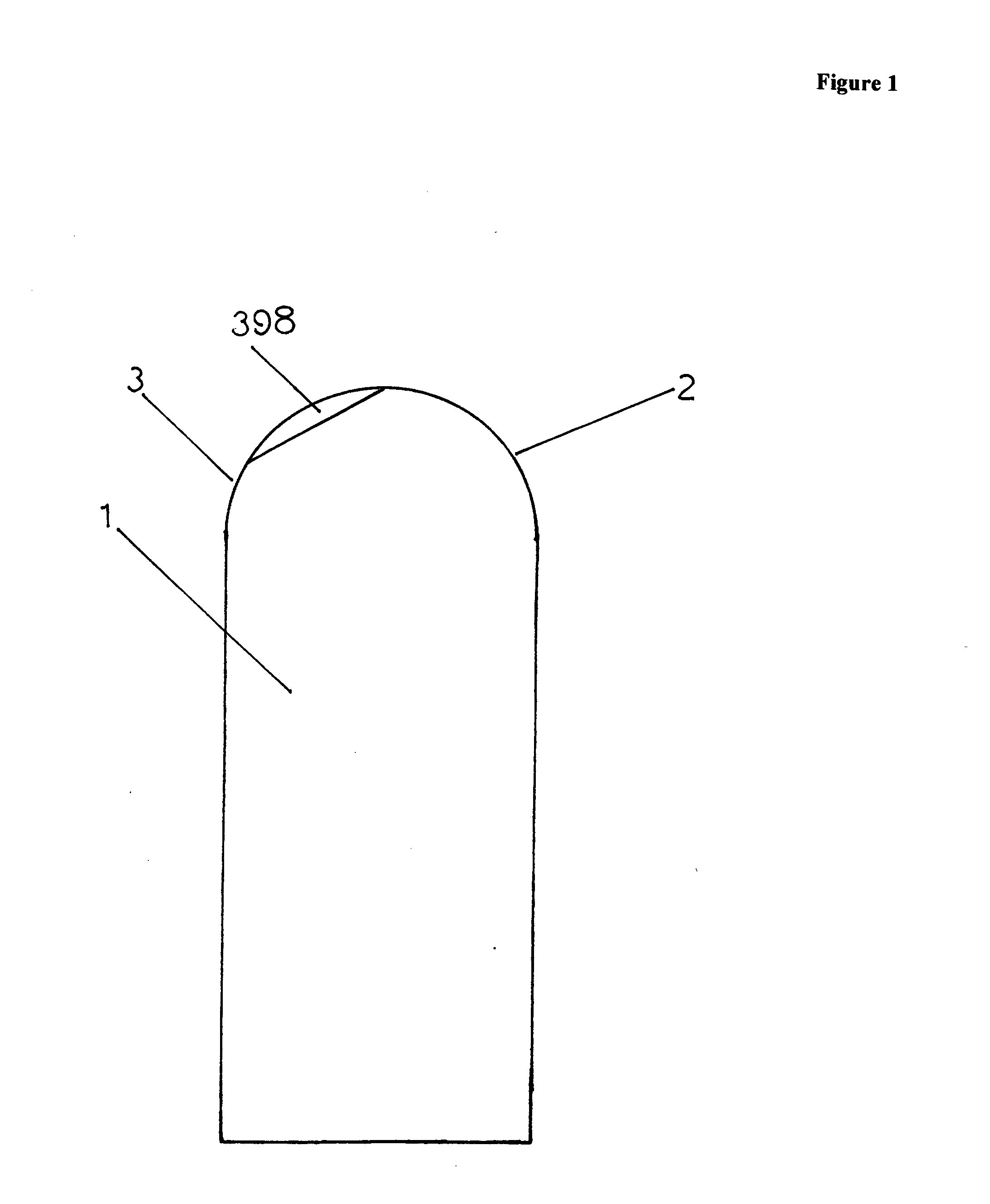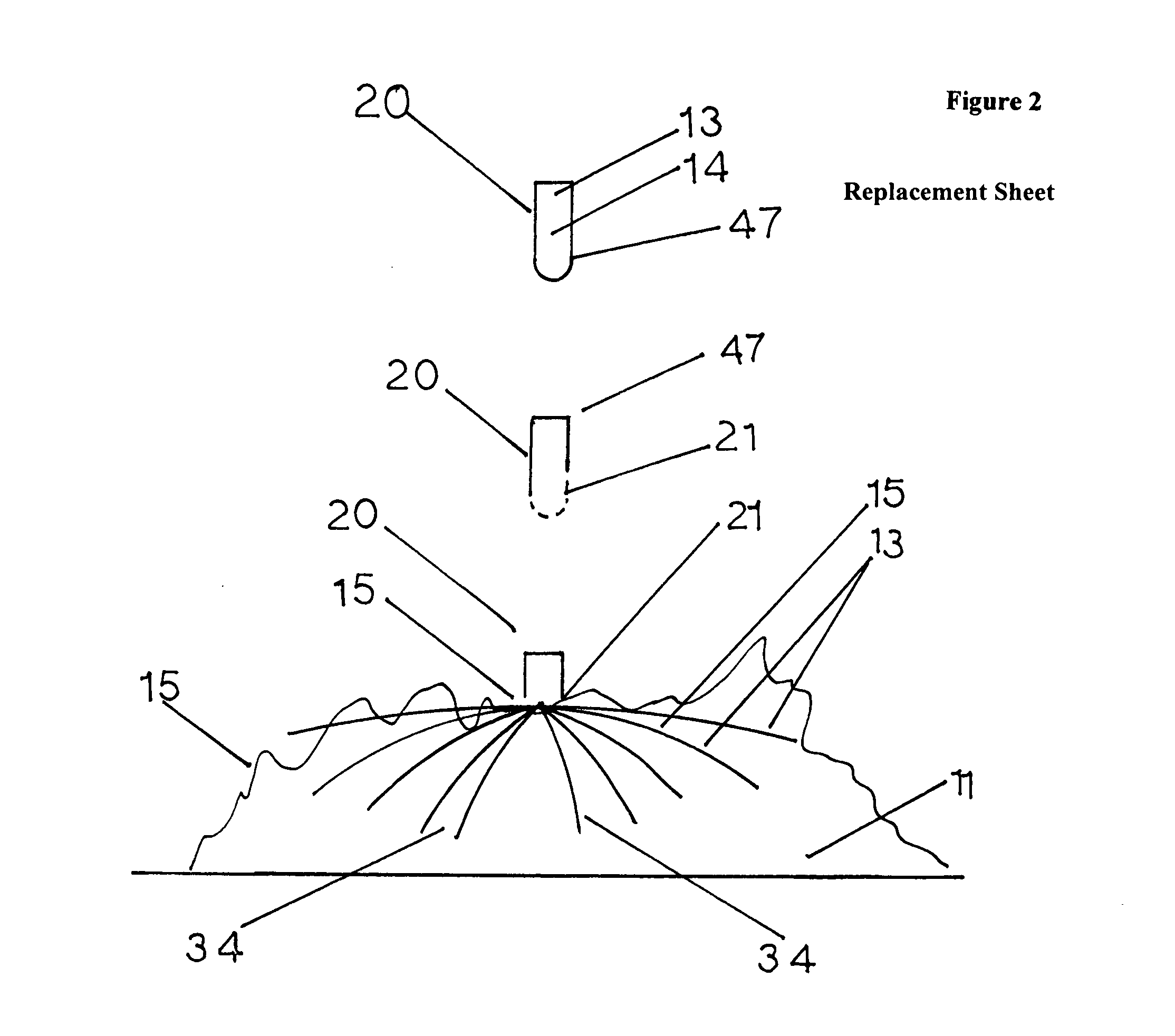Fire suppression delivery system
a delivery system and fire suppression technology, applied in fire rescue, dental surgery, medical science, etc., can solve the problems of high cost, low efficiency, and inability to meet the needs of large outdoor or wilderness areas, and achieve the effect of minimizing loss and high degree of precision and concentration
- Summary
- Abstract
- Description
- Claims
- Application Information
AI Technical Summary
Benefits of technology
Problems solved by technology
Method used
Image
Examples
Embodiment Construction
[0233] As used herein, an activatable means shall mean a means, method, methodology, mechanism, procedure, mechanical provision, electronic provision, conveyance, technique, process, way, microprocessor controlled, microprocessor initiated, microprocessor aided or assisted, microchip controlled, microchip initiated, microchip aided or assisted, nanotechnology controlled, nanotechnology initiated, nanotechnology aided or assisted, that in some way, shape or manner when activated, turned on, charged, charged with, programmed to, manually set to, manually programmed to, mechanically set to, mechanically programmed to, will cause a shell or device to partially release, completely release, leak, or in combination thereof release its contents.
[0234] As used herein, a shell is defined as a form of encasement, encapsulation, capsule, containment device, device which may also be referred to but not all inclusive to mean a canister, device or something of similar designation or meaning, that...
PUM
 Login to View More
Login to View More Abstract
Description
Claims
Application Information
 Login to View More
Login to View More - R&D
- Intellectual Property
- Life Sciences
- Materials
- Tech Scout
- Unparalleled Data Quality
- Higher Quality Content
- 60% Fewer Hallucinations
Browse by: Latest US Patents, China's latest patents, Technical Efficacy Thesaurus, Application Domain, Technology Topic, Popular Technical Reports.
© 2025 PatSnap. All rights reserved.Legal|Privacy policy|Modern Slavery Act Transparency Statement|Sitemap|About US| Contact US: help@patsnap.com



